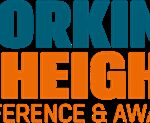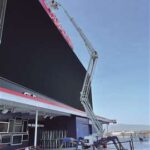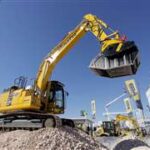Introduction: Choosing the Right Scissor Lift
Scissor lifts are essential for a wide range of tasks, from warehouse operations to outdoor construction projects. But when it comes to choosing between electric and diesel-powered scissor lifts, the decision isn’t always straightforward. Each type has its own advantages, drawbacks, and ideal applications.
This guide breaks down the key differences between electric and diesel scissor lifts, helping you make the best choice for your worksite.
Electric Scissor Lifts: Clean, Quiet, and Efficient
Electric scissor lifts run on battery-powered engines, eliminating the need for fuel. These lifts are zero-emission machines, making them perfect for indoor use and environmentally sensitive areas.
✅ Pros of Electric Scissor Lifts
- Eco-Friendly – No exhaust fumes or fuel spills, ideal for enclosed spaces.
- Quiet Operation – Perfect for hospitals, schools, and offices.
- Lower Maintenance Costs – Fewer moving parts mean fewer repairs.
- Non-Marking Tires – Prevents damage to indoor flooring.
❌ Cons of Electric Scissor Lifts
- Limited Runtime – Batteries require charging, which can lead to downtime.
- Lower Lift Capacity – Generally supports less weight than diesel models.
- Not Ideal for Rough Terrain – Best suited for smooth, level surfaces.
Best Uses for Electric Scissor Lifts
✔ Warehouses and distribution centers
✔ Indoor construction and maintenance
✔ Event setup in stadiums or convention centers
✔ Retail store renovations
Diesel Scissor Lifts: Power and Performance
Diesel scissor lifts are powered by internal combustion engines, making them more powerful and better suited for outdoor worksites. They provide higher lifting capacities and are built for uneven or rugged terrain.
✅ Pros of Diesel Scissor Lifts
- Higher Power Output – Handles heavy loads with ease.
- All-Terrain Capability – Works on dirt, mud, and uneven surfaces.
- Longer Runtime – No need for frequent recharging—just refuel and go.
❌ Cons of Diesel Scissor Lifts
- Emissions – Produces fumes, making them unsuitable for indoor use.
- Louder Operation – Not ideal for noise-sensitive environments.
- Higher Maintenance Costs – Requires fuel, oil changes, and more servicing.
Best Uses for Diesel Scissor Lifts
✔ Outdoor construction projects
✔ Industrial and mining operations
✔ Rough terrain and off-road job sites
✔ Infrastructure maintenance
Key Comparison: Electric vs. Diesel Scissor Lifts
| Feature | Electric Scissor Lift | Diesel Scissor Lift |
|---|---|---|
| Power Source | Battery | Diesel Fuel |
| Best For | Indoor use, smooth floors | Outdoor, rough terrain |
| Noise Level | Quiet | Noisy |
| Lifting Capacity | Lower weight limit | Higher load capacity |
| Runtime | Limited, requires charging | Can run continuously with refueling |
| Environmental Impact | Zero emissions | Emits exhaust fumes |
| Maintenance | Less frequent | Regular fuel, oil, and filter changes |
Which Scissor Lift Should You Choose?
The choice between electric and diesel scissor lifts ultimately depends on your project requirements:
- If you need an emission-free, quiet solution for indoor work, electric scissor lifts are the best choice.
- If you’re working outdoors on rough terrain with heavy loads, diesel scissor lifts provide the necessary power and durability.
By weighing these factors, you can select the best lift for the job, ensuring safety, efficiency, and productivity.




